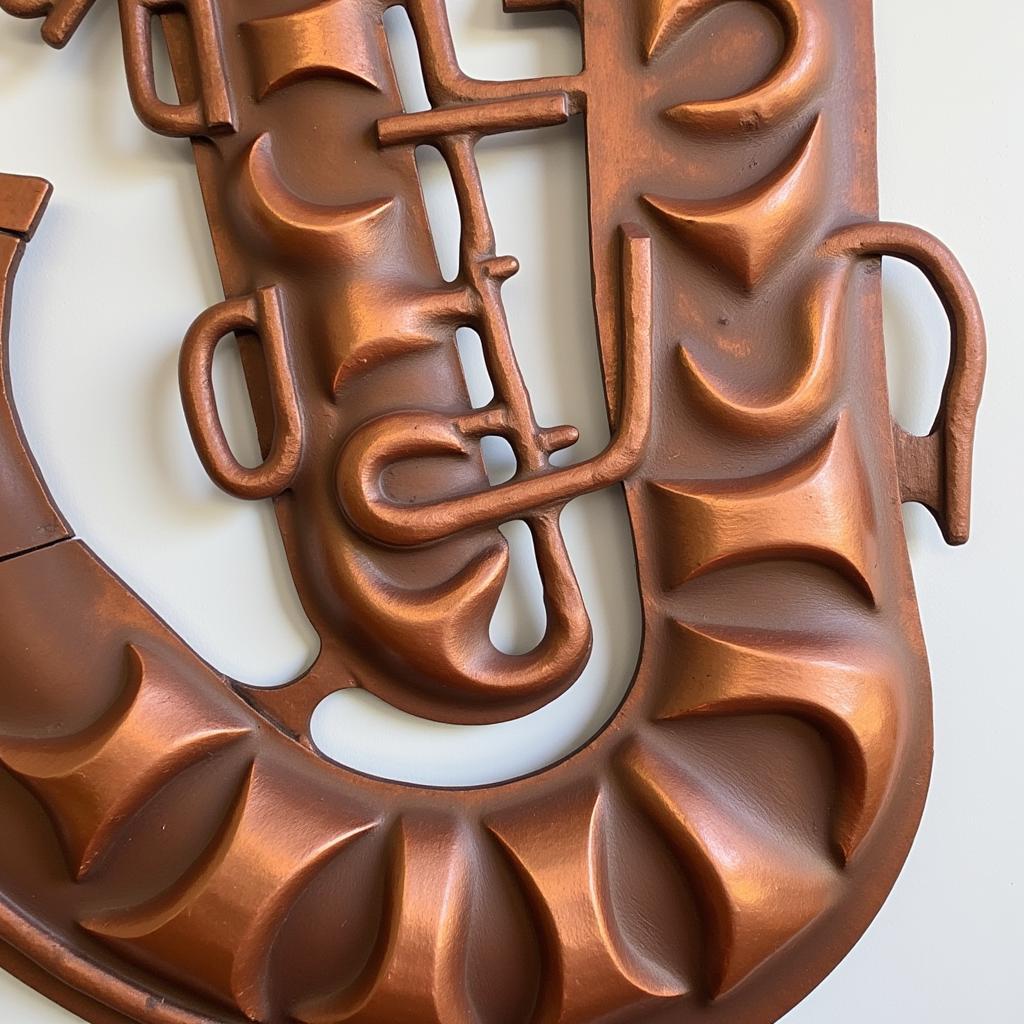Exploring the Controversial Realm of Antichrist Art
Antichrist Art, a provocative and often misunderstood genre, delves into the symbolic representation of the Antichrist figure, exploring themes of rebellion, power, and the duality of good and evil. This exploration often sparks controversy, raising questions about religious beliefs, artistic expression, and the boundaries of acceptable imagery.
Unmasking the Symbolism in Antichrist Art
Antichrist art isn’t simply about depicting a singular figure; it’s a complex tapestry woven with symbolism drawn from various religious texts, historical interpretations, and cultural anxieties. The imagery employed can range from subtle allusions to overt depictions of demonic figures, often incorporating traditional iconography associated with the devil, such as horns, cloven hooves, and serpentine forms. These symbols, however, are often recontextualized within a contemporary setting, prompting dialogue about the evolving nature of belief and the ongoing struggle between good and evil. What constitutes “antichrist art” can be subjective, encompassing a wide range of artistic styles and interpretations.
One common theme found in antichrist art is the inversion of religious symbols. Artists may depict inverted crosses, distorted biblical scenes, or corrupted religious figures to convey a sense of sacrilege and challenge established doctrines. This inversion serves not only as a visual representation of opposition but also as a commentary on the perceived hypocrisy or corruption within religious institutions. The use of such powerful imagery can be unsettling, forcing viewers to confront uncomfortable truths and question their own beliefs.
The Antichrist in Art History: From Medieval Manuscripts to Modern Media
Tracing the lineage of antichrist art reveals a fascinating evolution of visual representation, reflecting changing societal anxieties and artistic trends. From the grotesque depictions in medieval manuscripts to the more nuanced portrayals in contemporary art, the Antichrist has served as a powerful symbol for centuries. Early representations often focused on the Antichrist’s role as a deceiver and false prophet, emphasizing his seductive power and ability to corrupt the faithful. These depictions served as cautionary tales, reinforcing the importance of religious adherence and warning against the temptations of the devil.
With the advent of the Renaissance and the rise of humanism, artistic interpretations of the Antichrist began to shift. Artists started to explore the psychological and social dimensions of evil, portraying the Antichrist not just as a monstrous figure but also as a reflection of human fallibility and the potential for corruption within individuals and societies. This shift towards a more nuanced understanding of the Antichrist continued into the modern era, with artists using the figure to explore themes of political power, social unrest, and the dangers of unchecked ambition.
Is Antichrist Art Blasphemous or a Form of Social Commentary?
The question of whether antichrist art is inherently blasphemous or a legitimate form of social commentary is a subject of ongoing debate. Some argue that such art is an affront to religious beliefs, trivializing sacred symbols and promoting negativity. Others view it as a powerful tool for social critique, using provocative imagery to challenge established norms and spark dialogue about important issues. The interpretation of antichrist art often depends on the viewer’s individual perspective, cultural background, and religious beliefs. What one person may perceive as blasphemous, another may see as a thought-provoking exploration of complex themes.
The intention of the artist also plays a crucial role in how the artwork is perceived. While some artists may deliberately aim to shock or offend, others may use antichrist imagery as a metaphor to explore broader social or political issues. For example, the Antichrist figure can be used to represent tyrannical leaders, corrupt institutions, or the destructive consequences of unchecked power. By understanding the artist’s intent, viewers can gain a deeper appreciation for the complexities and nuances of the artwork.
“Antichrist art, while often controversial, provides a valuable lens through which to examine the evolving nature of religious belief and the ongoing struggle between good and evil in the modern world,” notes Dr. Amelia Blackwood, Professor of Art History at the University of Cambridge.
Conclusion
Antichrist art, a complex and multifaceted genre, continues to challenge and provoke. From its rich history to its contemporary interpretations, it offers a unique window into the human psyche and our enduring fascination with the forces of good and evil. By exploring the symbolism, historical context, and artistic intentions behind these works, we can gain a deeper understanding of their significance and engage in a meaningful dialogue about their role in contemporary society. Further exploration of this controversial yet captivating genre can lead to a richer appreciation of art’s power to challenge, question, and inspire.
FAQ
- What is the main focus of antichrist art? Antichrist art centers around the depiction and symbolism of the Antichrist figure, often exploring themes of good versus evil.
- How has antichrist art evolved over time? From medieval depictions to modern interpretations, antichrist art has reflected changing societal anxieties and artistic styles.
- Is all antichrist art blasphemous? The interpretation of antichrist art depends on individual perspectives and the artist’s intention, as it can be both blasphemous and a form of social commentary.
- What are some common symbols used in antichrist art? Common symbols include inverted crosses, demonic imagery, and corrupted religious figures.
- Why is antichrist art considered controversial? Its challenging of religious beliefs and use of provocative imagery often spark debate and controversy.
- What can we learn from studying antichrist art? Studying antichrist art provides insights into religious beliefs, historical context, and social commentary through art.
- How does antichrist art reflect cultural anxieties? It often serves as a mirror to societal fears and anxieties, reflecting concerns about power, corruption, and the unknown.
For further assistance, please contact us at Phone: 02462573573, Email: danteum@gmail.com or visit us at Savico Megamall, 7-9 Đ. Nguyễn Văn Linh, Gia Thụy, Long Biên, Hà Nội 10000, Việt Nam. We have a 24/7 customer support team.



